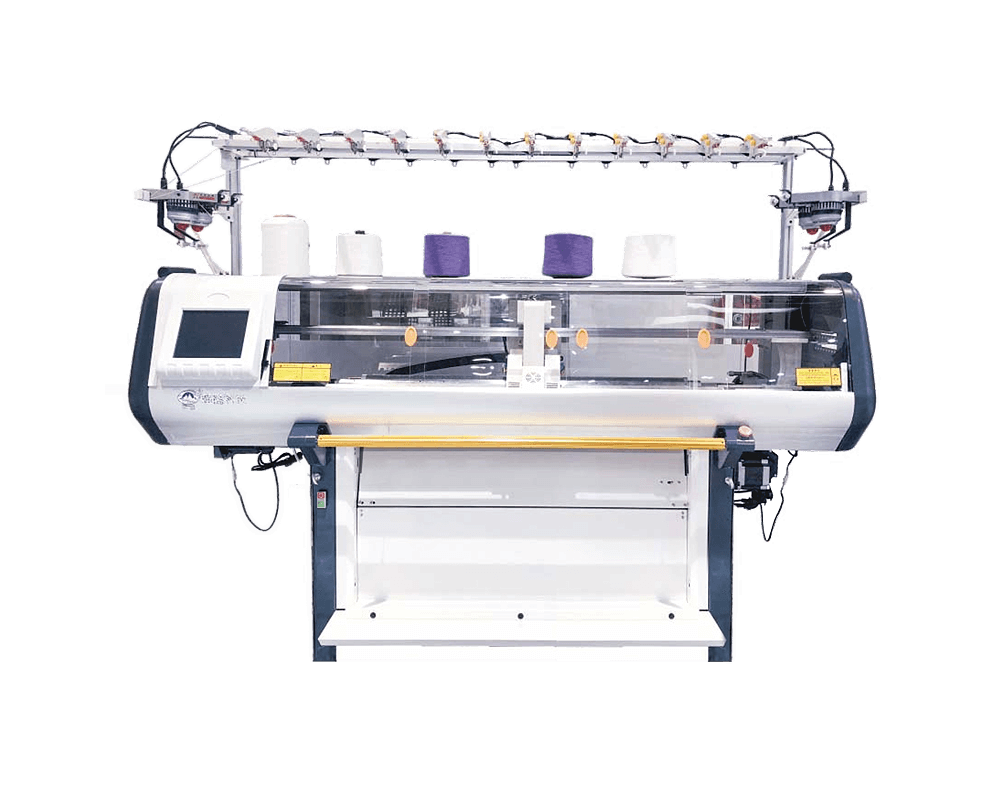Tongxiang Qianglong Machinery Co., Ltd. is high-tech China wholesale computerized flat knitting machine manufacturers, specialized in designing, developing, and manufacturing Knitting Machinery..
The required maintenance for a motorized feeder can vary depending on its design, components, usage intensity, and environmental conditions. Regular maintenance is essential to ensure the feeder's optimal performance, extend its lifespan, and prevent unexpected breakdowns. Here are some common maintenance tasks that might be required for a motorized feeder:
Cleaning and Inspection:
Regularly clean the feeder to remove dust, debris, and accumulated materials that can hinder its operation.
Inspect the feeder's components, including belts, rollers, guides, and chutes, for signs of wear, damage, or misalignment.
Lubrication:

Lubricate moving parts, such as bearings and gears, according to the manufacturer's recommendations to reduce friction and prevent premature wear.
Tension Adjustment:
Check and adjust belt tension or chain tension as needed to ensure proper movement and prevent slippage.
Electrical Components:
Inspect electrical connections, wiring, and connectors to ensure they are secure and free from corrosion.
Test and calibrate sensors, switches, and controls to ensure accurate operation.
Motor Maintenance:
Check the motor for signs of overheating, unusual noise, or vibration.
Ensure the motor's cooling system (if applicable) is functioning properly.
Replace Worn Parts:
Replace worn or damaged components, such as belts, chains, gears, and seals, to maintain smooth and reliable operation.
Alignment and Calibration:
Periodically check and adjust the alignment of the feeder's components to ensure accurate material feeding and movement.
Calibrate the feeder's settings, such as speed and timing, to match the requirements of the process.
Safety Checks:
Verify that safety features, such as emergency stops and interlocks, are functioning correctly.
Environmental Considerations:
If the feeder operates in challenging environments (e.g., extreme temperatures, high humidity, corrosive atmospheres), take appropriate measures to protect it from these conditions.
Documentation and Records:
Maintain a record of maintenance activities, inspections, and repairs performed on the feeder.
Training and Operator Care:
Train operators on proper usage, care, and maintenance of the feeder to minimize the risk of misuse or damage.
It's important to follow the manufacturer's guidelines and recommendations for maintenance, as outlined in the user manual or technical documentation provided with the motorized feeder. Establishing a routine maintenance schedule and conducting preventive maintenance can help avoid costly downtime and ensure the feeder's reliable operation over time. If you're using the feeder in a specific industry or application, there might be additional maintenance considerations tailored to that context.
Cleaning and Inspection:
Regularly clean the feeder to remove dust, debris, and accumulated materials that can hinder its operation.
Inspect the feeder's components, including belts, rollers, guides, and chutes, for signs of wear, damage, or misalignment.
Lubrication:

Lubricate moving parts, such as bearings and gears, according to the manufacturer's recommendations to reduce friction and prevent premature wear.
Tension Adjustment:
Check and adjust belt tension or chain tension as needed to ensure proper movement and prevent slippage.
Electrical Components:
Inspect electrical connections, wiring, and connectors to ensure they are secure and free from corrosion.
Test and calibrate sensors, switches, and controls to ensure accurate operation.
Motor Maintenance:
Check the motor for signs of overheating, unusual noise, or vibration.
Ensure the motor's cooling system (if applicable) is functioning properly.
Replace Worn Parts:
Replace worn or damaged components, such as belts, chains, gears, and seals, to maintain smooth and reliable operation.
Alignment and Calibration:
Periodically check and adjust the alignment of the feeder's components to ensure accurate material feeding and movement.
Calibrate the feeder's settings, such as speed and timing, to match the requirements of the process.
Safety Checks:
Verify that safety features, such as emergency stops and interlocks, are functioning correctly.
Environmental Considerations:
If the feeder operates in challenging environments (e.g., extreme temperatures, high humidity, corrosive atmospheres), take appropriate measures to protect it from these conditions.
Documentation and Records:
Maintain a record of maintenance activities, inspections, and repairs performed on the feeder.
Training and Operator Care:
Train operators on proper usage, care, and maintenance of the feeder to minimize the risk of misuse or damage.
It's important to follow the manufacturer's guidelines and recommendations for maintenance, as outlined in the user manual or technical documentation provided with the motorized feeder. Establishing a routine maintenance schedule and conducting preventive maintenance can help avoid costly downtime and ensure the feeder's reliable operation over time. If you're using the feeder in a specific industry or application, there might be additional maintenance considerations tailored to that context.

 English
English 简体中文
简体中文
 Chinese
Chinese English
English











